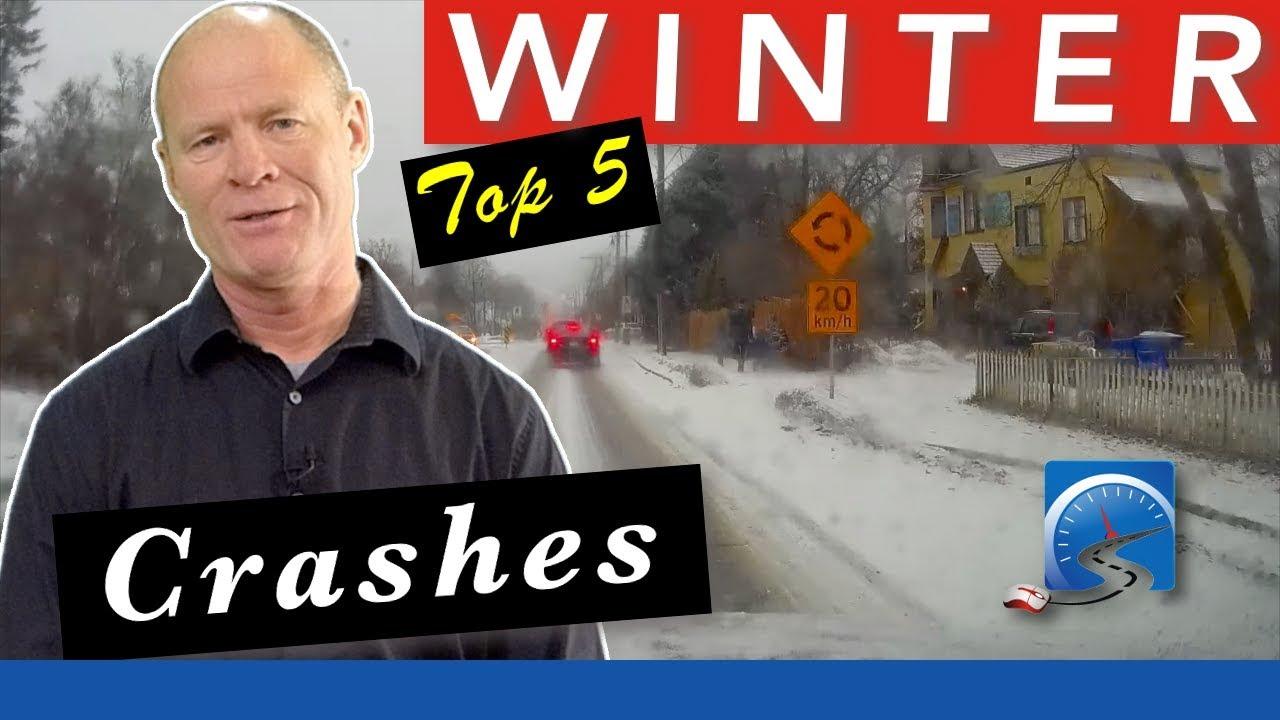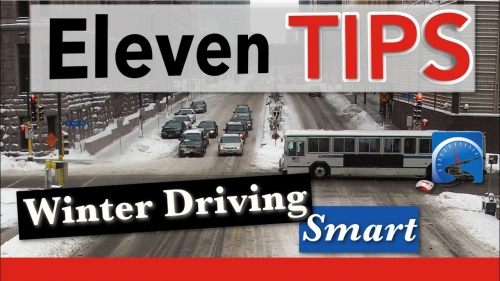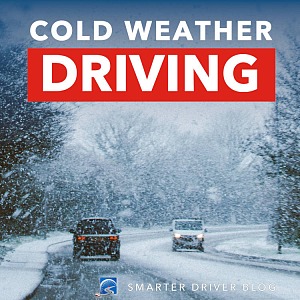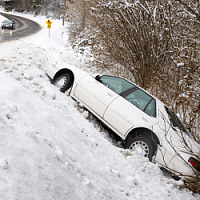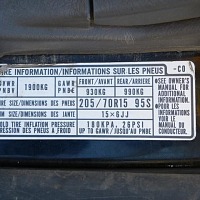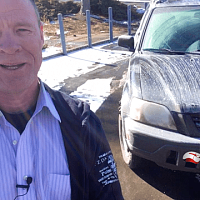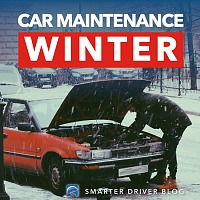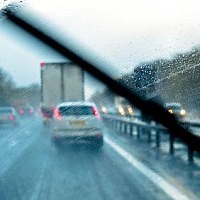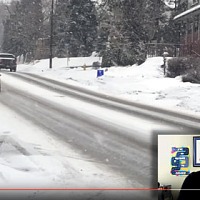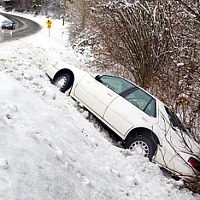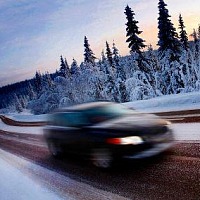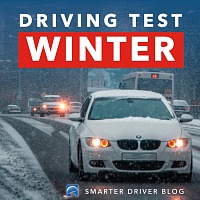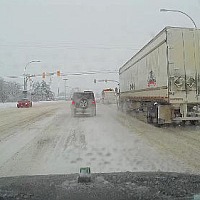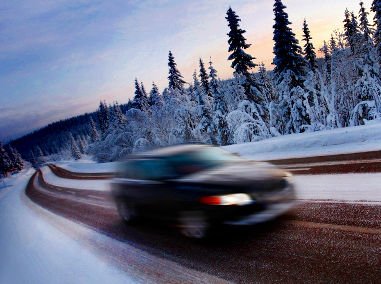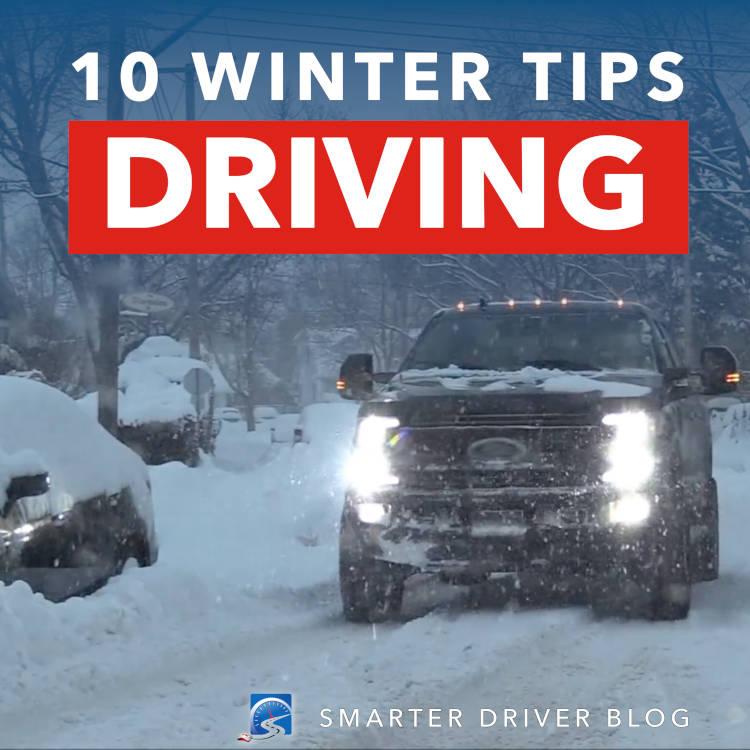
Driving is more treacherous when the temperature is near freezing.
A layer of water forms on top of ice causing it to be more slippery than it would be at sub-zero temperatures.
As well, slush and road spray can impair your vision and ability to see.
Importantly, road surfaces become unpredictable as ice forms on only some parts of the roadway and not others.
This blog post offers information, tips and advice on how to increase your safety during times in the winter when the roads are coverecd with snow and ice.
#1) Take Note of the Outside Temperature
Contrary to the news reports and what people say on social media, the roads are NOT more dangerous when the temperatures are sub-zero. Colder ice and snow, in fact, provides better traction.
When the outside temperature is near freezing (32°F or 0°C) there is a layer of water on top of the snow and ice. It's this layer of water that lubricates the ice and makes it slippery.
Think of an ice hockey rink after the zamboni cleans and floods the ice.
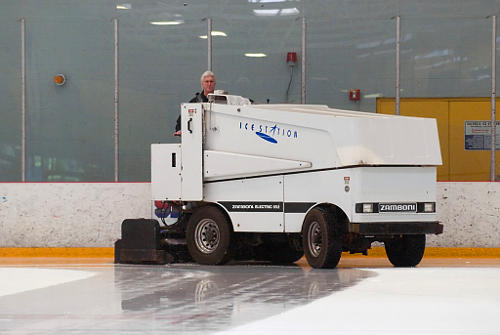
The layer of water on top of the ice makes it slippery because it acts as a lubricant.
At freezing, ice and snow have a layer of water on top, thus making traction quesionable.
Most modern cars are fitted with an outside thermometer and will warn of ice.
If not, look at the weather app on your phone.
#2) Know which parts of the road freeze first;
If the outside temperature is near the freezing point, there will be ice.
It forms first:
1) on bridges and overpasses;
2) in low-lying area;
3) parts of the landscape that lie in shadow (hills, buildings, & bridges);
4) roads that run past bodies of water;
5) and high elevations.
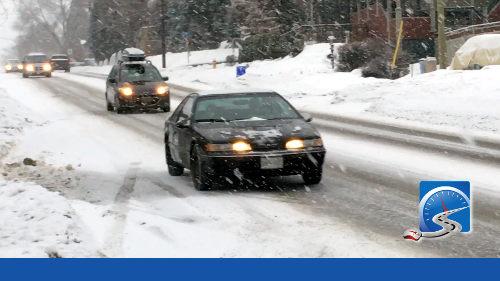
These are the notorious places where the proverbial "black ice" will hide.
#3) Clear snow, frost and dirt from lights and glass;
Clear all the frost and dirt from windshields and lights.
It is imperative that you are seen and can see.
Clean glass and lights remain key to communication and staying predictable on the roadway.
Keep a snow brush in the car to clean snow and ice from the vehicle.
Or you can do that environmental thing and leave the engine running for 30 minutes or so until all the snow and ice as melted off the glass!
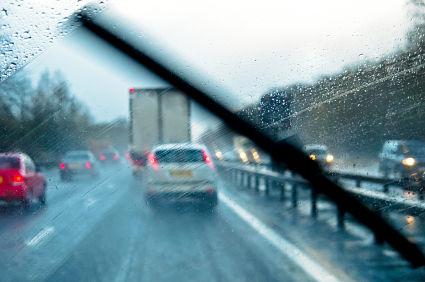
You many have to stop at a service centre to use their squeeges to clean the glass on your vehicle.
#4) Ensure that your windshield washer fluid is topped up;
If there is snow on the ground, and the temperature climbs to freezing there will be slush and yukky snow & stuff.
The spray from traffic will demand that you have windshield washer fluid.
If you find WINTER washer fluid on sale, stock up with a few jugs.
Buy a few jugs to have on hand so that you don't get caught short.
CLICK for more information.
If you don't use winter washer fluid, you will do damage to your vehicle.
The cost of replacing the windshield washer reservoir is costly!
#5) Use the primary controls with ease;
Braking, steering and acclerating must be done gently.
And over-use of these primary controls could potentially cause your vehicle to go out of control.
When going over bridges that are most likely covered with ice, stay off the accelerator, brake and keep the vehicle going in a straight line.

When turning corners, braking and steering must be separate actions to maitain control.
#6) Know that that primary controls must be used separately;
When cornering, slowing down, turning and accelerating must be separate actions.
When the roads are slick, one must brake, then turn, and then accelerate gently - unlike the summer when braking and turning can be done simultaneously.
A combination of any of the primary controls could potentially cause you to lose control of your vehicle.
Click for more information.
#7) Allow yourself extra time;
We all know this bit of advice, but somehow can't seem to get ourselves out the door sooner.
The dog crapped on the floor, you spilled the milk taking it out of the fridge and you just couldn't drag your sorry carcass out of bed that morning.
And whatever, the radio didn't indicate any danger.
Yet, it is when we're in a hurry that things often go wrong.
With luck, hope and a "wing & a prayer" though, you'll just be late - and you can tell that horror story about how you came "this close" to being creamed by a semi-truck going sideways down "suicide" hill.
#8) Minimize distractions and take note of weather conditions;
Put down the coffee and turn off the radio and focus on the task of driving when you know that conditions could potentially change at any time.
By doing so, you can see the bridge that may be icy, or the section of roadway that is lying is shadow.
There are many distractions in our vehicle far beyond that of just the cell phone.
#9) Increase your following distance;
When the temperature is near the freezing point, increase your following distance to 3 or 4 seconds.
If you're away from other road users and you lose control, there is less likely a chance that your mishap will become a major collision.
 #10) Beware of intersections on back roads;
#10) Beware of intersections on back roads;
The farther you get away from main roads, the more snow and ice there will be on the roads.
When the temperature is near the freezing point, road maintenance crews are often busy on the main roads putting down salt and sand.
However, the back roads and residential areas of town are often left until later in the day.
Be cautious at intersections in residential and less-travelled areas.
Little doubt, winter driving has its challenges, but with these tips, information and advice, your winter commute can be tranquil and uneventful.

